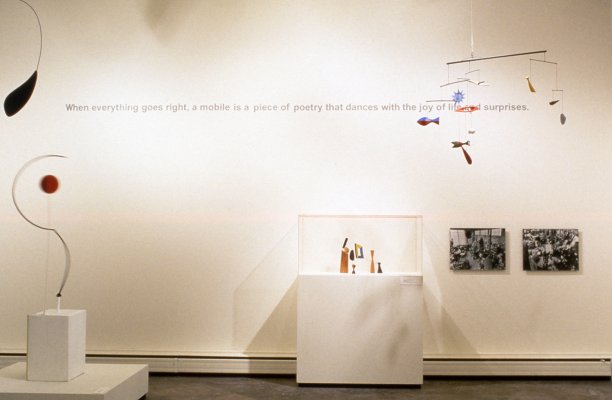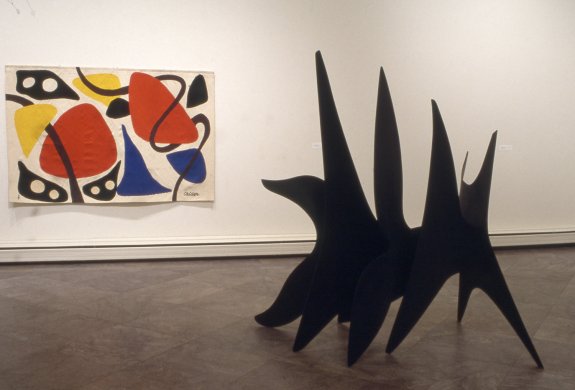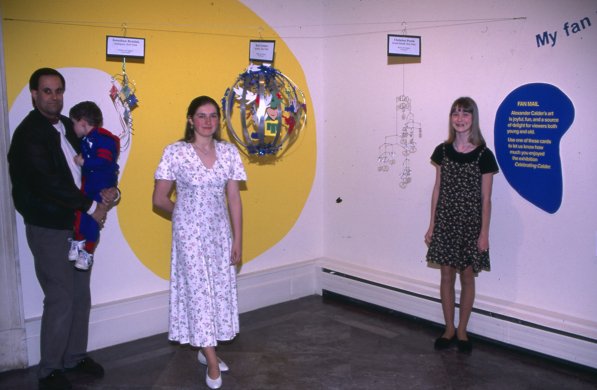Celebrating Calder
Saturday, March 9, 1996–Sunday, May 5, 1996

Installation view of Celebrating Calder. Photograph by Tom Loonan.
1905 Building
Celebrating Calder, organized by the Whitney Museum of American Art, was a whimsical exhibition featuring more than 50 sculptures, drawings, jewelry, and tapestries by Alexander Calder.
One of the 20th century’s most celebrated and beloved masters, Calder is best remembered as the inventor of the mobile. Born in 1898 in Lawnton, Pennsylvania, Calder graduated from the Stevens Institute of Technology in Hoboken, New Jersey. After working as a mechanical engineer for several years, he began studying at the Art Students League of New York in 1923. In 1926, he went to Paris where he produced works based on the circus. The Circus introduced Calder to many of the artists who were to be influential in his career — Mondrian and Miró, for example — and it served as a laboratory in which he developed ideas and techniques used in his later work.
After a visit to Mondrian’s studio in the early 1930s, Calder abandoned representational sculpture in favor of abstract, geometric, constructions, which Jean Arp labeled “stabiles.” He gradually began to add movement and these became known as “mobiles,” named by Marcel Duchamp. By the 1950s, Calder began to produce sculpture on a monumental scale, and his outdoor work is certainly among the most brilliant public sculptures of our time. He also produced prolific designs for posters, textiles, jewelry, and tableware. In 1976, Calder was honored with a large retrospective, Calder’s Universe, at the Whitney; he died shortly thereafter.
This exhibition featured a unique group of rooms designed for children of all ages, allowing space for mobile-making, contour-line drawings, and an opportunity to play with Calderesque shapes.
This exhibition was organized by the Whitney Museum of American Art.
Exhibition Sponsors
This exhibition was supported by a generous grant from the Annie Laurie Aitkin Charitable Trust, and was made possible, in Buffalo, through the generous support of M&T Bank.
This exhibition was supported by a generous grant from the Annie Laurie Aitkin Charitable Trust, and was made possible, in Buffalo, through the generous support of M&T Bank.

